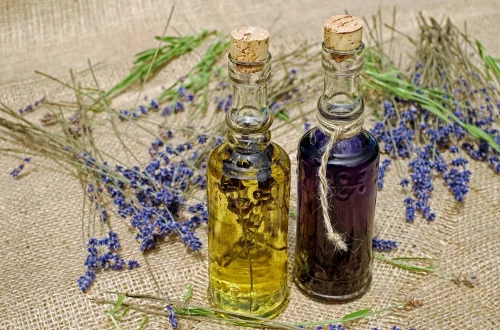
Effective Powder to Stop Bleeding: A Comprehensive Guide
In various scenarios, from minor cuts to more serious injuries, bleeding can pose a significant risk. Understanding how to effectively manage bleeding is crucial, whether you are at home, in a workplace, or outdoors. The human body is resilient, but it often requires assistance to cope with injuries that disrupt its natural healing processes. This is where the use of specialized powders designed to stop bleeding becomes essential.
These powders are formulated to accelerate clotting, reduce blood loss, and promote healing. They are particularly valuable in emergency situations where immediate medical attention may not be available. The effectiveness of these powders can vary based on their composition, application method, and the nature of the injury. Furthermore, the increasing availability of these products in various settings has made it essential for individuals to understand their proper use and benefits.
By gaining insight into how these powders work, their different types, and their applications, you can be better prepared to handle bleeding emergencies efficiently. Whether you are a first responder, a parent, or someone who enjoys outdoor activities, knowing about effective bleeding control methods can make a significant difference in outcomes.
Understanding the Mechanism of Bleeding Control Powders
Bleeding control powders work through a variety of mechanisms that promote rapid clot formation and minimize blood loss. When an injury occurs, the body initiates a natural response to stop bleeding, which includes the constriction of blood vessels and the activation of platelets. However, in certain situations, this natural response may not be sufficient, especially when the injury is severe or when the individual has a condition that affects blood clotting.
Most bleeding control powders contain hemostatic agents. These agents can be derived from natural sources or synthesized in laboratories. Common ingredients include chitosan, which is derived from shellfish, and kaolin, a type of clay. When applied to a bleeding wound, these substances create an environment conducive to the clotting process. They can absorb moisture from the wound and concentrate platelets, which is crucial for forming a stable clot.
In addition to promoting clot formation, these powders also serve to protect the wound from external contaminants. This is particularly important in outdoor settings where dirt and bacteria can increase the risk of infection. By forming a barrier over the wound, these powders can help to keep the injury clean while the body begins its healing process.
It’s essential to apply these powders correctly for them to be effective. This usually involves cleaning the wound gently, applying the powder directly to the site of bleeding, and then applying pressure to encourage clotting. The application of pressure is critical, as it helps to push the powder into the wound, enhancing its effectiveness.
Furthermore, it’s worth noting that while these powders can be highly effective, they are not a substitute for professional medical treatment. In cases of severe bleeding, it’s vital to seek immediate medical assistance, as additional interventions may be necessary to address underlying issues.
Types of Bleeding Control Powders
There are several types of bleeding control powders available on the market, each designed for specific applications and situations. Understanding the differences between these products can help you choose the right one based on your needs.
One of the most common types of hemostatic powders is those containing chitosan. Chitosan-based powders are known for their ability to rapidly absorb blood and promote clotting. They are often used in emergency medical situations, as they can effectively control bleeding from traumatic injuries. These powders are particularly beneficial because they can work effectively even in the presence of anticoagulants, which are medications that inhibit blood clotting.
Another type is kaolin-based powder. Kaolin works by activating the body’s intrinsic pathway of coagulation, leading to quicker clot formation. This type of powder is often used in surgical settings or by first responders in the field. Kaolin-based products are generally easy to apply and can be effective for a variety of bleeding scenarios.
There are also newer formulations that combine multiple hemostatic agents to enhance effectiveness. These multi-agent powders may contain a blend of natural and synthetic materials, designed to target different aspects of the clotting process. Such products can be particularly useful in complex injuries where multiple factors may impede normal clotting.
In addition to the ingredient composition, bleeding control powders may differ in terms of their application methods. Some powders are designed to be sprinkled directly onto a wound, while others may come in a spray format for easier application. Understanding how to use each type effectively is crucial for achieving the best results.
It’s also important to consider the shelf life and storage requirements of these products. Many bleeding control powders have a long shelf life, making them suitable for emergency kits. However, proper storage is essential to maintain their effectiveness over time. Always check the expiration date and store in a cool, dry place.
Applications and Best Practices for Use
The application of bleeding control powders can vary depending on the nature of the injury and the environment. It’s crucial to follow best practices to ensure the effectiveness of these products and to safeguard the individual’s health.
First and foremost, it is essential to assess the severity of the bleeding. For minor cuts or abrasions, a simple application of powder may suffice. However, for more severe injuries, such as deep lacerations or traumatic wounds, additional measures may be necessary. Always prioritize calling for emergency medical help in serious situations.
Before applying a bleeding control powder, the wound should be cleaned gently to remove any dirt or debris. This step is vital as it reduces the risk of infection and ensures that the powder can work effectively. Once the area is clean, apply the powder liberally to the bleeding site.
After application, it’s important to apply direct pressure to the wound. This can be done using a clean cloth or bandage. Maintaining pressure not only helps in the absorption of the powder but also promotes clotting by compressing the blood vessels. It is advisable to hold this pressure for several minutes to allow the clot to form properly.
Additionally, monitoring the wound after treatment is crucial. If bleeding continues despite the use of powder and pressure, it may indicate a more serious injury that requires professional medical attention. Knowing when to seek help is a critical part of managing bleeding effectively.
Lastly, education is key. Individuals should familiarize themselves with the various types of bleeding control powders available and understand their proper application. This knowledge can be invaluable in emergencies, ensuring that you are prepared to act swiftly and effectively when needed.
**Disclaimer:** This article is for informational purposes only and is not intended to provide medical advice. Always consult a healthcare professional for medical concerns or conditions.




